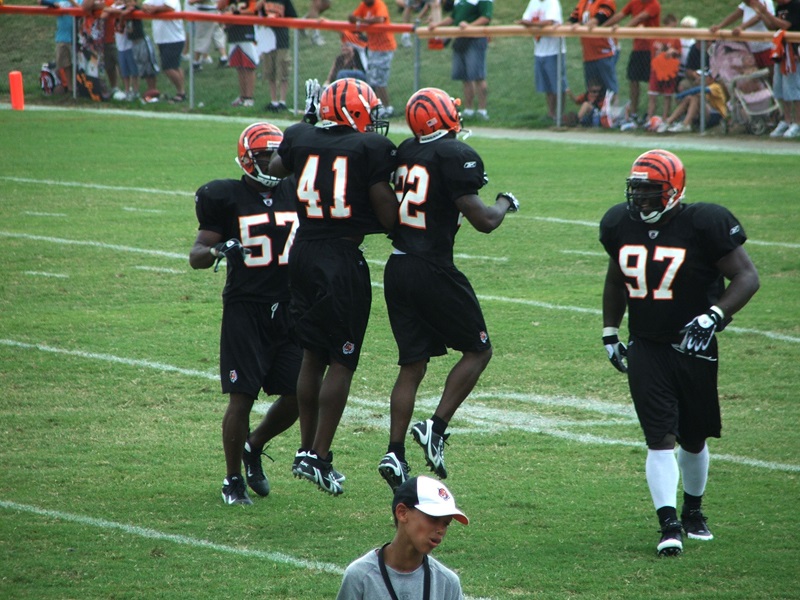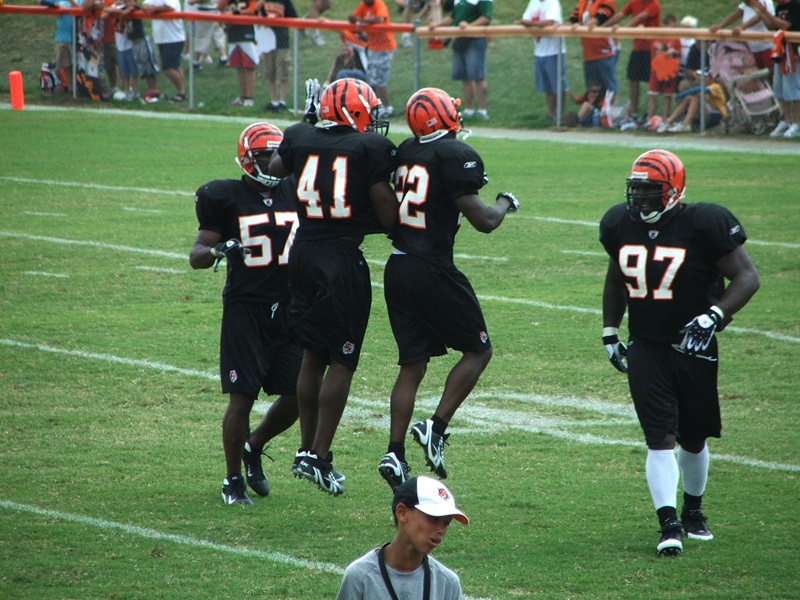
Footballguys.com Bob Henry is one of the best fantasy writers I know and someone I’m thankful to have as a friend of mine. We became fast friends after sharing our love for the old AFC Central; Funk, Soul, and R&B music; and all the varieties of Asian cuisine.
Bob – a huge Michigan fan – is my unofficial area scout for the Big Ten. At points throughout the season, he sends me word of players he likes and we compare notes in January. One of his mentions this year is Wolverine receiver Jeremy Gallon – a player whose style he likened to Carolina Panthers leader Steve Smith.
Listed at 5’8″, 183 lbs., Gallon matches Smith’s physical dimensions, but he has a stretch of road ahead of him as difficult as Russia’s Trans-Siberian Highway if he hopes to be mentioned in the same breath as the 13-year NFL veteran. Still, I think Gallon plays bigger than his size and has a flair for the dramatic on the field.
A series that I started last spring at the RSP blog is The Boiler Room. One of the challenges involved with player analysis is to be succinct with delivering the goods. As the author of an annual tome, I’m often a spectacular failure in this respect.
Even so, I will study a prospect and see a play unfold that does a great job of encapsulating that player’s skills. When I witness these moments, I try to imagine if I would include this play as part of a cut-up of highlights for a draft show at a major network or if I was working for an NFL organization creating cut-ups for a personnel director. Unlike the No-Huddle Series, The Boiler Room is focused on prospects I expect to be drafted, and often before the fourth round.
It’s incredibly difficult to boil down any player with just one play. Yet, if I need a play to add to the highlight reel that will help a team make a decision where to slot Jeremy Gallon on its board, this 62-yard touchdown is my nomination. This is a 1st-and-10 with 6:00 in the first quarter from a 12 personnel weak side twin receiver set. Gallon is at the right hash stacked behind his teammate. Notre Dame has one safety deep on this play.
[youtube=http://youtu.be/deiN203Dx1s]
Gallon runs up the right hash on a seam route and then sits in the middle of a wide open zone 15 yards past the line of scrimmage. He catches the ball close to his body and turns inside the hash with the nearest defender five yards behind him. The next closest defender to Gallon is 10 yards over top and outside the right hash.
Gallon gains 10 yards up the middle through a huge hole, jukes outside the defender at the left hash and then stumbles towards the safety over top just as the defender he juked outside wraps the receiver at the waist. Here’s where Gallon displays the kind of balance that hints at Steve Smith’s game. He spins inside the safety, shakes the defender wrapping him, and then makes the safety miss all at the same time. The Wolverines receiver then dips inside a second safety.
Within a snap of the fingers, Gallon has beaten three defenders and regains his balance as he runs towards the right hash. By the time he accelerates past a fourth defender, Gallon is in the clear for the final 20 yards to the end zone.
Gallon runs like a kick return specialist and this is a job he can compete for immediately in the NFL. The receiver displays a strong downhill mentality in the open field and doesn’t waste motion or slow his pace trying to make defenders miss like so many quick-twitch, agile receivers. His move to avoid three defenders was not a display of power; it was excellent balance to maintain his footing, spin through contact to limit the impact, and terrific protection of the football under his left arm.
We know he has the athleticism to get deep in single coverage, but I like that Gallon is so quick to find the open zone in the middle of the field. He may never become Steve Smith, but if he can demonstrate the smarts to match his toughness and athleticism, he might become a dynamite NFL slot receiver in a league. At worst, I think he’s a more explosive player in the mold of Harry Douglas or Doug Baldwin.
For analysis of skill players in this year’s draft class, download the 2013 Rookie Scouting Portfolio available now. Better yet, if you’re a fantasy owner the 56-page Post-Draft Add-on comes with the 2013 RSP at no additional charge and available for download within a week after the NFL Draft. Best, yet, 10 percent of every sale is donated to Darkness to Light to combat sexual abuse. You can purchase past editions of the Rookie Scouting Portfolio for just $9.95 apiece.









